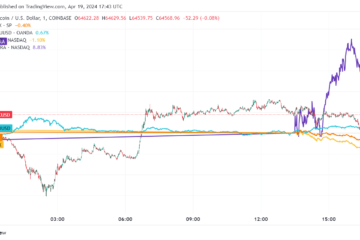Circle co-founder Jeremy Allaire has called for US dollar-pegged stablecoin issuers to be registered in the United States, emphasizing the need for regulatory clarity as lawmakers introduce new legislation on digital assets.
Allaire made the statement during a Bloomberg interview on Feb. 26 amid growing discussions in Washington over stablecoin oversight, a key issue in shaping the future of crypto regulation.
The call for formal registration aligns with efforts by some policymakers to bring stablecoin issuers under a clear legal framework, particularly as the market for dollar-pegged digital assets expands.
Legislative efforts
Stablecoins play a significant role in digital asset markets, serving as a bridge between traditional finance and cryptocurrencies.
However, regulatory uncertainty has persisted, with questions about reserve backing, consumer protections, and financial stability risks.
Earlier this month, Senator Bill Hagerty (R-Tenn.) introduced a bill aimed at creating a federal framework for stablecoin regulation. The legislation is among the first crypto-related measures expected to be debated under President Donald Trump’s second term.
Trump has signaled support for positioning the US as a leader in the crypto industry, setting the stage for potential regulatory shifts that could impact stablecoin issuers like Circle.
Industry push for clarity
Circle’s USDC is the second-largest stablecoin by market capitalization, following Tether Limited’s USDT. The firm has positioned itself as a more transparent and regulatory-compliant issuer compared to its rivals.
The company has long advocated for a clear legal framework that would allow stablecoins to operate within the US financial system rather than in regulatory gray areas. However, some argue that this could potentially hamper innovation and competition in a global market.
Allaire’s call for US registration aligns with broader industry efforts to establish trust and stability in the market. While some lawmakers and regulators have expressed concerns about stablecoins’ potential impact on financial stability, others argue that well-regulated issuers could enhance payment efficiency and innovation.
With stablecoins now central to the cryptocurrency ecosystem, the ongoing debate over their regulation is likely to shape the future of digital finance in the U.S. Whether Hagerty’s bill gains traction or undergoes significant revisions, the push for clarity in stablecoin oversight marks a crucial moment for both the industry and policymakers.
Mentioned in this article


 Bitcoin
Bitcoin  Ethereum
Ethereum  Tether
Tether  XRP
XRP  USDC
USDC  Solana
Solana  TRON
TRON  Lido Staked Ether
Lido Staked Ether  Dogecoin
Dogecoin  Figure Heloc
Figure Heloc  Cardano
Cardano  WhiteBIT Coin
WhiteBIT Coin  Wrapped stETH
Wrapped stETH  Bitcoin Cash
Bitcoin Cash  Wrapped Bitcoin
Wrapped Bitcoin  USDS
USDS  Binance Bridged USDT (BNB Smart Chain)
Binance Bridged USDT (BNB Smart Chain)  Chainlink
Chainlink  Wrapped eETH
Wrapped eETH  LEO Token
LEO Token  Monero
Monero  WETH
WETH  Hyperliquid
Hyperliquid  Stellar
Stellar  Zcash
Zcash  Ethena USDe
Ethena USDe  Coinbase Wrapped BTC
Coinbase Wrapped BTC  Litecoin
Litecoin  Sui
Sui  Avalanche
Avalanche  Hedera
Hedera  sUSDS
sUSDS  Shiba Inu
Shiba Inu  USDT0
USDT0  Dai
Dai  Mantle
Mantle  PayPal USD
PayPal USD  Toncoin
Toncoin  World Liberty Financial
World Liberty Financial  Cronos
Cronos  Ethena Staked USDe
Ethena Staked USDe  Uniswap
Uniswap  Polkadot
Polkadot  MemeCore
MemeCore  Aave
Aave  USD1
USD1  Canton
Canton  Rain
Rain 


